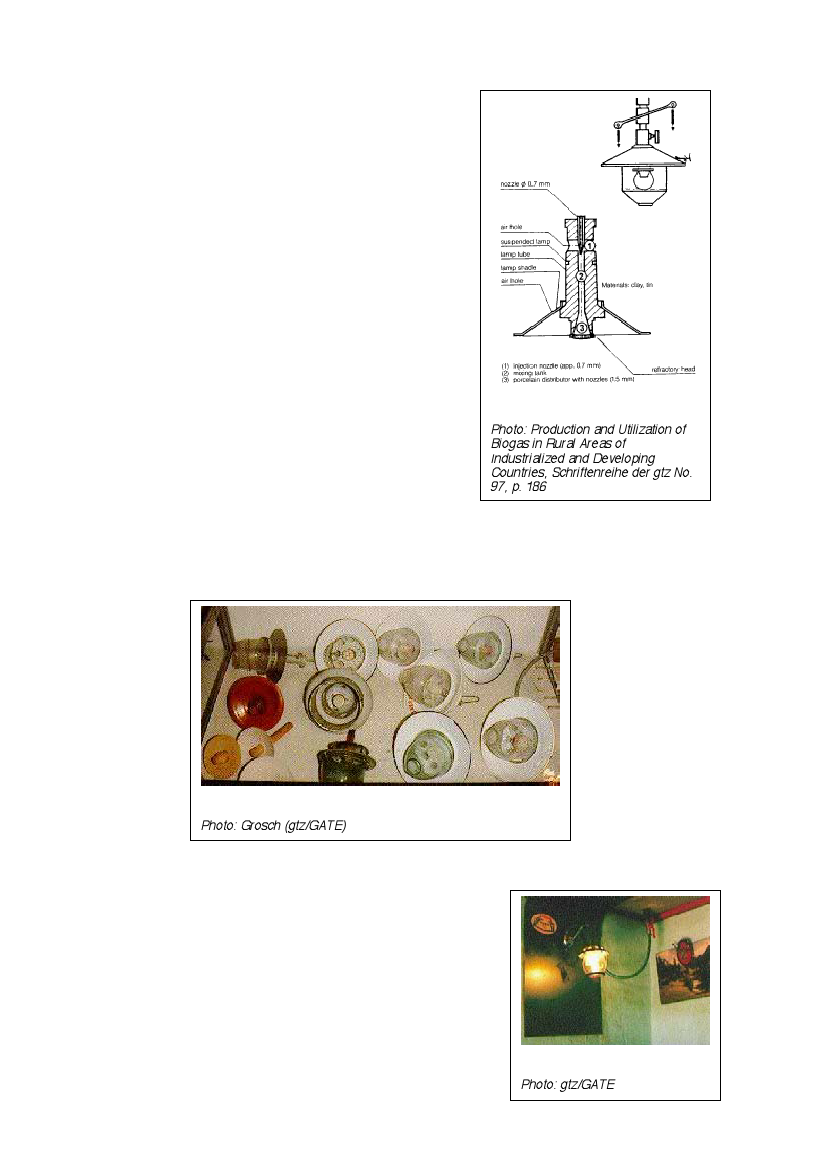
Optimal tuning
The performance of a biogas lamp is dependent on
optimal tuning of the incandescent body (gas
mantle) and the shape of the flame at the nozzle,
i.e. the incandescent body must be surrounded by
the inner (=hottest) core of the flame at the
minimum gas consumption rate. If the incandescent
body is too large, it will show dark spots; if the flame
is too large, gas consumption will be too high for the
light-flux yield. The lampshade reflects the light
downward, and the glass prevents the loss of heat.
Shortcomings of commercial-type biogas lamps
Practical experience shows that commercial-type
gas lamps are not optimally designed for the
specific conditions of biogas combustion (fluctuating
or low pressure, varying gas composition). The most
frequently observed shortcomings are:
• excessively large nozzle diameters
• excessively large gas mantles
• no possibility of changing the injector
• poor or lacking means of combustion-air
control
Figure 11: Schematic structure of
a biogas lamp
Photo: Production and Utilization of
Biogas in Rural Areas of
Industrialized and Developing
Countries, Schriftenreihe der gtz No.
97, p. 186
Such drawbacks result in unnecessarily high gas consumption and poor lighting. While the
expert/extension officer has practically no influence on how a given lamp is designed, he can
at least give due consideration to the mentioned aspects when it comes to selecting a
particular model.
Figure 12: Different types of Biogas lamps at an agricultural
exhibition in Beijing/China
Photo: Grosch (gtz/GATE)
Adjusting a biogas lamp
Biogas lamps are controlled by adjusting the supply of
gas and primary air. The aim is to make the gas mantle
burn with uniform brightness and a steady, sputtering
murmur (sound of burning, flowing biogas). To check the
criteria, place the glass on the lamp and wait 2-5 minutes,
until the lamp has reached its normal operating
temperature. Most lamps operate at a gas pressure of 5-
15 cm WC (water column). If the pressure is any lower,
the mantle will not glow, and if the pressure is too high
(fixed-dome plants) the mantle may tear.
Figure 13: Biogas lamp in
Burundi
Photo: gtz/GATE
21